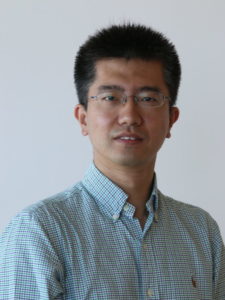
A virtual machine is no different than any other physical computer like a laptop or phone, only it relies on software rather than physical components to run programs and deploy apps. It also enables one or more virtual machines to run on a single physical computer, saving physical space, time and management costs. For these reasons, modern cloud computing providers rely on virtual machines to provide efficient, flexible and cost-effective services to their users. Cloud providers have also introduced new ways for users to reduce costs, including accessing underutilized virtual machines at a fraction of their original price.
Electrical and computer engineering assistant professor Mingyue Ji and his team have observed through their research, however, that these types of computing resources often vary significantly in computational speed and storage availability and can be acquired by higher priority jobs under short notice. This behavior can result in computational failure and drastically increase a machine computing time even if they share the same configuration. Ji’s lab has developed a new framework that can optimally handle the varying computation speeds across machines using a novel algorithm. Based on an evaluation of the performance of their designs, his team found that the algorithm outperforms state-of-the-art design by more than 30%.
Ji’s team achieved this by implementing a computing framework that utilizes coded storage to reduce communication costs, minimize storage and provide a layer of security. However, coded storage has limited applications, whereas uncoded storage can carry out any computation, but its storage cost and computational loads can be high, and security is difficult to achieve. Throughout the project, Ji will continue to refine this work as well as develop new computing frameworks for uncoded storage and address security challenges while aiming for optimal and implementable solutions. The results of the project have the potential for sizable economic benefits.
Ji hopes to eventually apply this work to Edge Computing, a type of cloud computing that utilizes various data centers and applications located near the user. With data centers located physically close to the source of the network traffic, companies can serve users’ requests faster. Some preliminary efforts have already been made through several undergraduate senior projects and many of them have won various ECE department awards.
As part of the project’s educational efforts, Ji has created a YouTube channel where he regularly adds videos that include lectures from his course, example problems, practice quizzes, lab instructions and other helpful information. He currently has three complete courses available on his channel that he hopes will continue to serve as a resource to students and community members studying at all levels. In the future, Ji plans to organize live-streamed discussion sessions where all students can participate and have their questions answered. Ji also participates in the University of Utah student club, Asian American Student Association, where he introduces students to engineering concepts and technology trends.